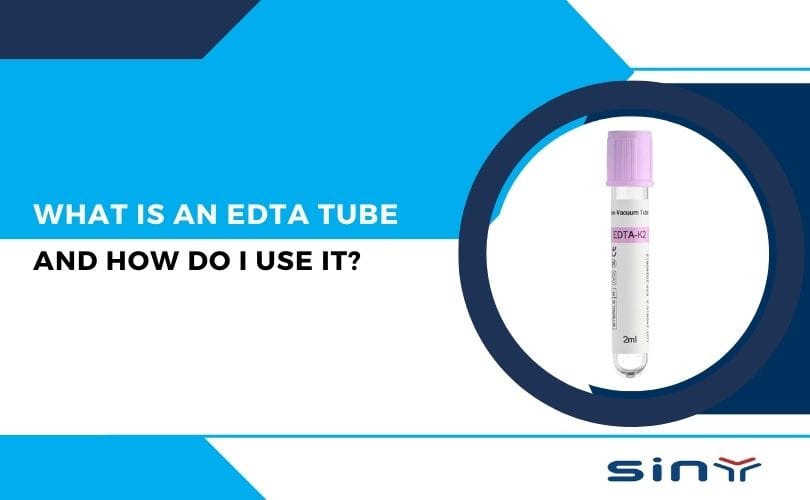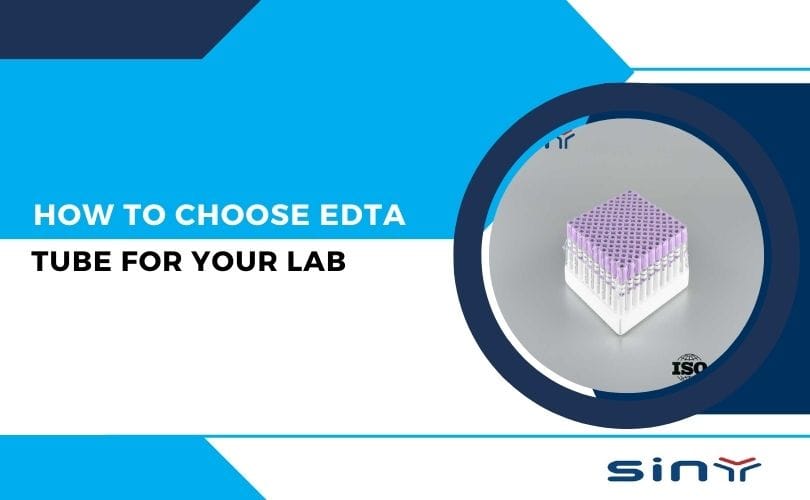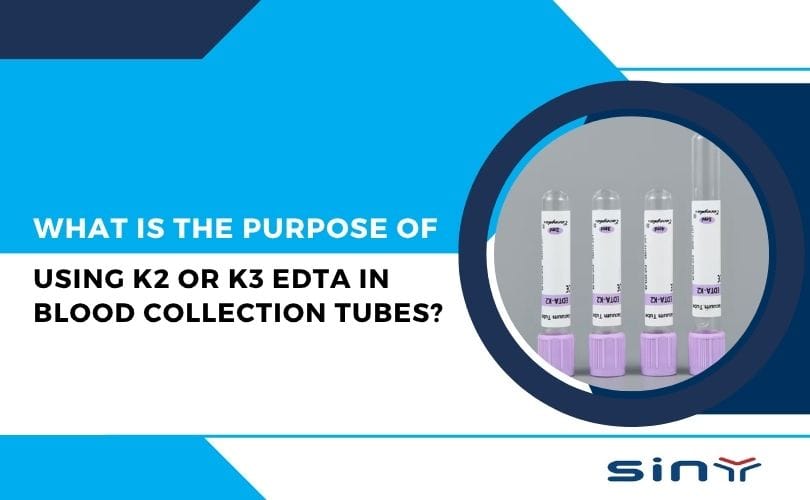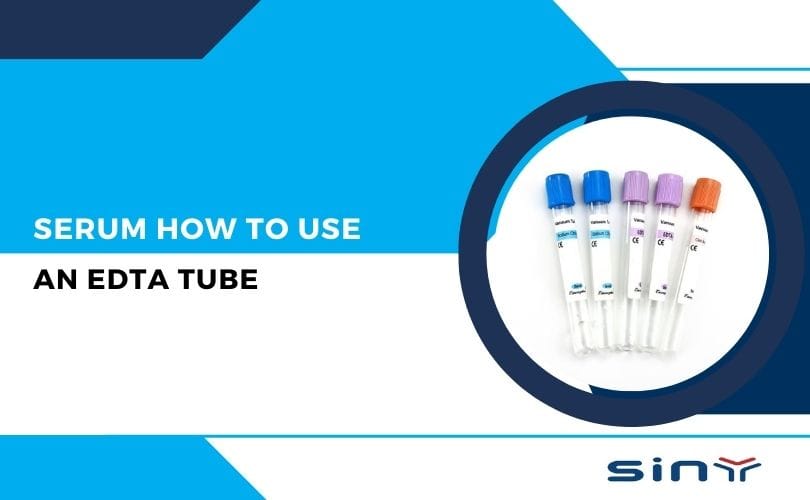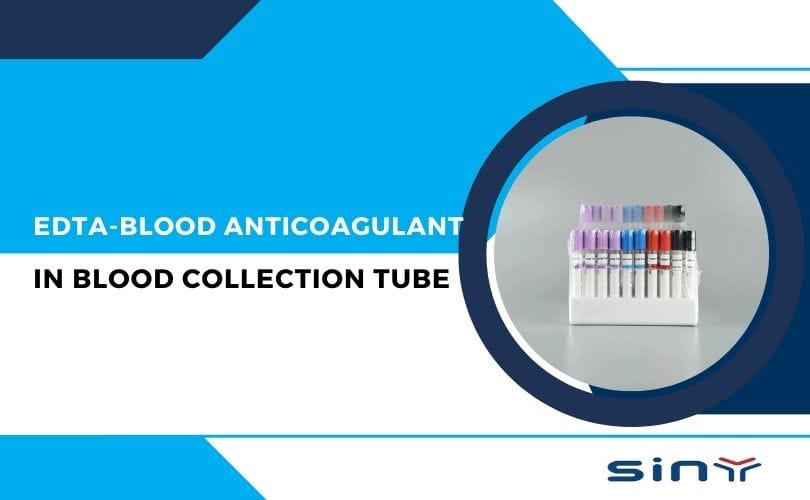In the world of medical diagnostics and laboratory testing, EDTA tubes play a crucial role. Whether you’re a healthcare professional, a lab technician, or simply someone curious about medical tools, understanding what an EDTA tube is and how to use it can be incredibly beneficial. This comprehensive guide will walk you through everything you need to know about EDTA tubes, their applications, and best practices for their use.
What is an EDTA Tube?
An EDTA tube is a blood collection tube coated with Ethylenediaminetetraacetic acid (EDTA)—a chemical anticoagulant that prevents clotting by binding calcium. These tubes are typically identified by their lavender or purple caps, making them easily distinguishable from other collection tubes.
Color Code: Purple or Lavender top
Anticoagulant Used: EDTA (K2 EDTA or K3 EDTA)
Purpose: Prevents clotting, preserves cellular structure, and stabilizes blood for laboratory analysis
If you want to explore more about EDTA tubes, you can visit the official EDTA Tube website for in-depth product details and types.
How Does an EDTA Tube Work?
Blood naturally clots to prevent excessive bleeding. The clotting process requires calcium ions, which activate several clotting factors. EDTA works by chelating (binding) calcium ions, stopping this process and keeping the blood in its liquid state.
Here’s why it matters:
It preserves the shape and size of blood cells.
It allows accurate hematology tests like Complete Blood Count (CBC).
It prevents clot formation, which can ruin diagnostic results.
The use of EDTA tubes is especially critical in labs that need to analyze the morphology of cells under the microscope.
For detailed product specifications, check out the EDTA Tubes for Blood Collection.
Types of EDTA Tubes
Not all EDTA tubes are the same. Depending on the additive and intended use, there are different categories:
K2 EDTA Blood Collection Tubes
Contain dipotassium salt of EDTA.
Preferred for flow cytometry and molecular diagnostics.
Learn more about these at K2 EDTA Blood Collection Tubes.
K3 EDTA Blood Collection Tubes
Contain tripotassium salt of EDTA.
Common in routine hematology tests.
Explore details at K3 EDTA Blood Collection Tubes.
Lavender Top EDTA Tubes
Widely used in hematology for CBCs.
Prevents platelet clumping and preserves blood cells.
More info here: Lavender Top EDTA Tubes.
Purple Top EDTA Tubes
Ideal for blood banking and hematology.
Known for consistent performance.
Product details: Purple Top EDTA Tube.
Specialized EDTA Tubes for HbA1c Testing
Designed for monitoring diabetes (HbA1c levels).
Stabilizes samples for precise results.
Available at EDTA Vacuum Blood Collection Tube for HbA1c Test.
For an overview of all available tubes, check the EDTA Tube Product Category.
How to Use an EDTA Tube Properly
Using an EDTA tube might sound straightforward, but improper handling can lead to clotting, hemolysis, or inaccurate results. Here’s a step-by-step guide:
Step 1: Identify the Correct Tube
Use the purple/lavender-top tube for hematology or molecular tests.
Step 2: Collect the Blood Sample
Use standard venipuncture techniques.
Step 3: Fill to the Marked Volume
Underfilling or overfilling alters the blood-to-anticoagulant ratio, leading to errors.
Step 4: Mix Gently (Do Not Shake)
Invert the tube 8–10 times immediately after collection to ensure the anticoagulant mixes well.
Step 5: Store at Recommended Conditions
Most samples should be analyzed within 24–48 hours when refrigerated.
For more detailed usage guidelines, you can visit EDTA Tubes for Blood Collection.
Applications of EDTA Tubes
EDTA tubes are indispensable in various medical fields:
Hematology: Complete Blood Count (CBC), Reticulocyte Count
Blood Banking: Cross-matching, Antibody Screening
Molecular Diagnostics: PCR, DNA/RNA extraction
Diabetes Monitoring: HbA1c testing
Clinical Research: Preserving blood for experiments
To see how EDTA tubes are shaping global medical testing, check out Siny Medical’s EDTA Tubes and their YouTube channel.
Summary
EDTA tubes are a cornerstone of modern medical diagnostics, enabling accurate and reliable test results across a wide range of applications. From Complete Blood Counts to HbA1c testing, these tubes are essential tools for healthcare professionals. By understanding their types, uses, and best practices, you can ensure optimal outcomes in your diagnostic procedures.
For high-quality EDTA tubes and other medical supplies, visit EDTA Tube. Explore our extensive range of products, including Purple Top Blood Collection Tubes and EDTA Vacuum Blood Collection Tubes for HbA1c Testing. For more information, check out our About Us page or Contact Us directly.
FAQs
1. What does EDTA stand for?
EDTA stands for Ethylenediaminetetraacetic acid, a chelating agent that binds calcium.
2. Why are EDTA tubes purple or lavender?
The color coding helps labs quickly identify anticoagulant tubes used for hematology.
3. Can I use an EDTA tube for glucose testing?
No, for glucose levels, fluoride tubes are more appropriate.
4. How long is blood stable in an EDTA tube?
Typically 24–48 hours under refrigeration, depending on the test.
5. What’s the difference between K2 and K3 EDTA tubes?
K2 EDTA is considered gentler on cells and is preferred for molecular tests, while K3 EDTA is widely used in hematology.

